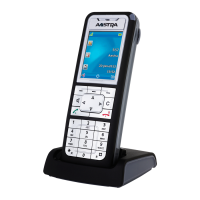Identification elements
89
System functions and features as of R3.0
syd-0367/1.3 – R3.0 – 03.2013
This redirecting information at user C is available for CFU, CFB, CFNR and Call Deflec-
tion (CD). (With CD forwarded from is displayed instead of deflected from.)
4. 5. 1. 1 Outgoing call with local call forwarding
The configuration possibilities for the redirecting information depend on the desti-
nation user:
If the destination user is
• an internal user in the local PINX, the redirecting information is always transmit-
ted to the called user.
• a PISN user, a PISN user in a virtual network, an integrated mobile phone user or
a public network user, you can select in the trunk group configuration whether
the redirecting information is to be sent to the called user or suppressed (Send
redirecting information = Yes / No).
• a public network user and if CLIR is activated at the user who carried out the re-
directing, the called user will see neither the originator of the call nor that it has
been redirected. This even though the calling user did not activate CLIR. To pre-
vent this, you can set the CLIR for redirected calls parameter in the trunk group
configuration to No.
In a call forwarding chain with several users the name/number of the first user in
the chain is displayed as redirecting information to the called user.
4. 5. 1. 2 Incoming call with CDE overflow
If in the event of a CDE overflow the call is routed from one call distribution ele-
ment to another due to the entries under CDE if busy or CDE if no answer, the redi-
recting information provided to the called user depends on the new destination:
If the destination is
• an internal user or a user in a private QSIG network, the name/number of the
CDE is transmitted.
• a virtual network PISN user, the direct dial number to which the call is made is
transmitted.
• an external user in the public network, no redirecting information is transmitted.

